Discover 11 hidden attractions, cool sights, and unusual things to do in Clarksville (United States). Don't miss out on these must-see attractions: First Presbyterian Church, Johnson County Courthouse, and Clarksville Confederate Monument. Also, be sure to include Davis House in your itinerary.
Below, you can find the list of the most amazing places you should visit in Clarksville (Arkansas).
Table of Contents
First Presbyterian Church
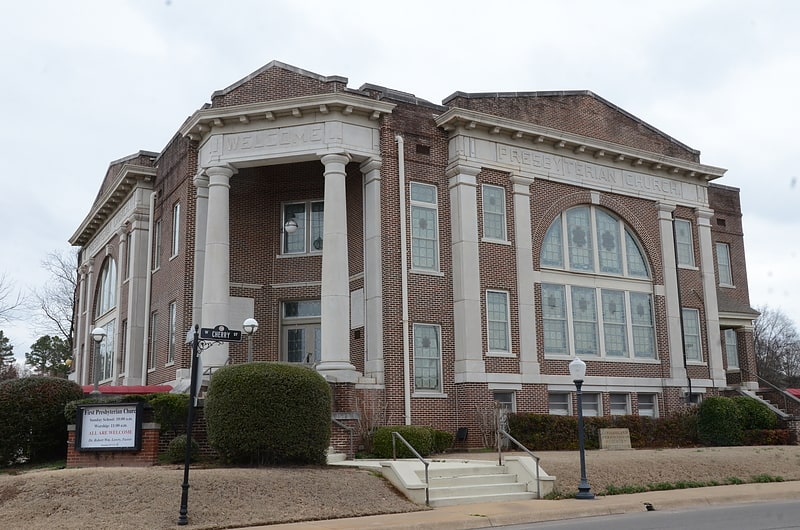
Church building in Clarksville, Arkansas. The First Presbyterian Church is a historic church building at 212 College Avenue in Clarksville, Arkansas. It is a two-story steel-framed structure, finished in brick. It is rectangular, with a central sanctuary flanked on the sides by office and meeting spaces. At the center of its roof is a dome, which is obscured by gabled parapets on the street-facing facades. The church was designed by Rogers based architect A.O. Clarke, and was completed in 1922 for a congregation founded in 1840. It is the finest example of Classical Revival architecture in Johnson County.
The building was listed on the National Register of Historic Places in 1991.[1]
Address: 212 N College Ave, Clarksville
Johnson County Courthouse
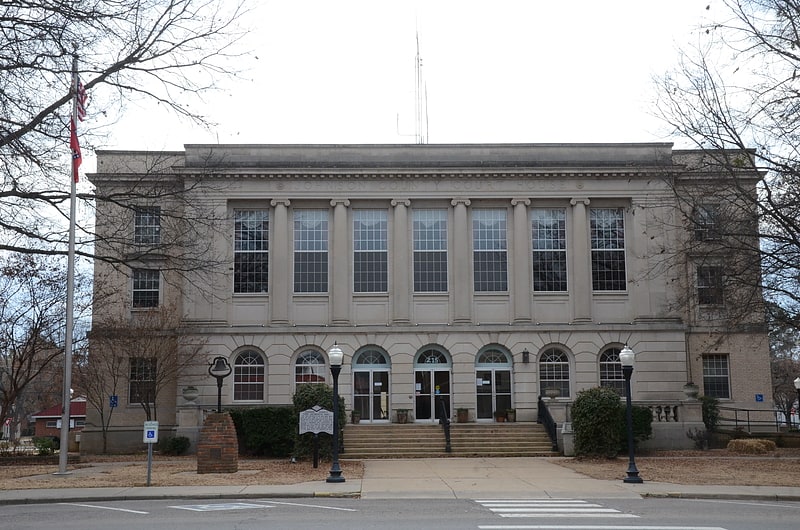
Courthouse. The Johnson County Courthouse is located at Main and Fulton Streets in downtown Clarksville, the county seat of Johnson County, Arkansas. It is a three-story masonry structure, built out of brick and rusticated concrete blocks. It has a Classical Revival facade, with a seven-bay projecting section. Windows and entrances on the ground floor are set in round-arch openings, while the upper-level windows are rectangular sash, set in bays articulated by pilasters. It was built in 1934 with funding support from the Federal Emergency Administration, and is the county's third courthouse.
The building was listed on the National Register of Historic Places in 1991.[2]
Clarksville Confederate Monument
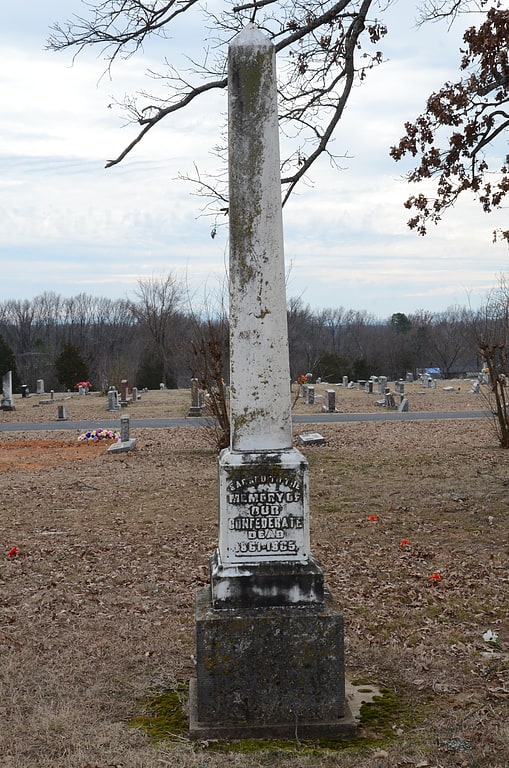
Monument in Clarksville, Arkansas. The Clarksville Confederate Monument is located in the south-central section of Oakland Cemetery in Clarksville, Arkansas. It is a white marble obelisk, 10 feet in height, which is 21.5 inches square at its base. It is mounted on a limestone pedestal 2 feet square and 22 inches in height. The lower portion of the obelisk is carved with an inscription commemorating the Confederate war dead, and its spire is adorned with a floral pattern. It was placed about 1902 by the local chapter of the United Daughters of the Confederacy.
The inscription reads:
The monument was listed on the National Register of Historic Places in 1999.[3]
Davis House
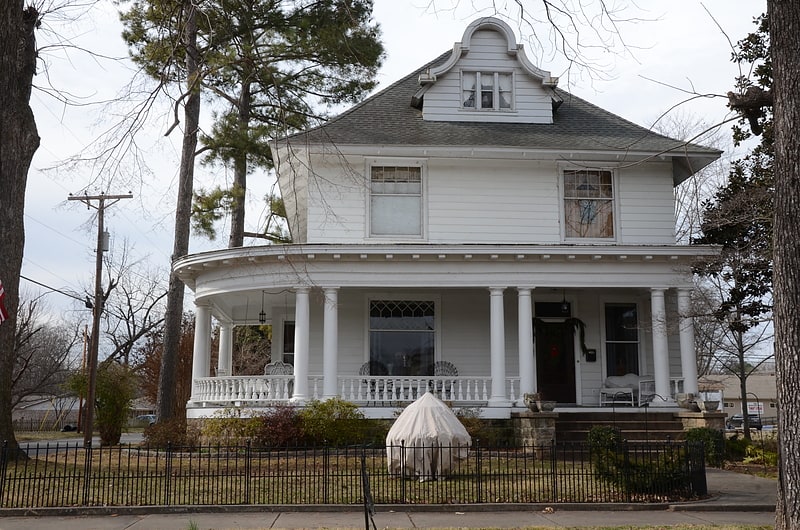
The Davis House is a historic house at 212 Fulton Street in Clarksville, Arkansas. It is a 2+1⁄2-story wood-frame American Foursquare structure, with a hip roof, weatherboard siding, and a foundation of rusticated concrete blocks. The roof has flared eaves with exposed rafter ends, and a front-facing dormer with a Flemish-style gable. The porch extends across the front and curves around to the side, supported by Tuscan columns. The house was built about 1905 to a design by noted Arkansas architect Charles L. Thompson.
The house was listed on the National Register of Historic Places in 1982.[4]
Bunch-Walton Post No. 22 American Legion Hut

The Bunch-Walton Post No. 22 American Legion Hut is a historic social club meeting hall at 201 Legion Street in Clarksville, Arkansas. It is architecturally unique in the community, built out of native stone in the manner of a Norman castle. It is two stories in height, with rounded projecting corners and a crenellated parapet. Its main entrance is set in a rounded-arch opening at the center of the front facade, and is elevated, with access via flight of stairs. It was built in 1934, and is believed to be the only American Legion hall of this style in the state.
The building was listed on the National Register of Historic Places in 2007.[5]
Dunlap House
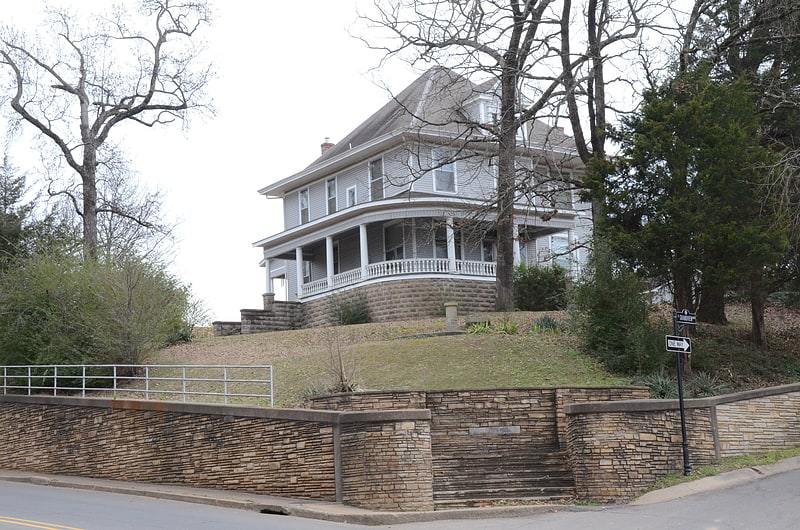
The Dunlap House is a historic house at 101 Grandview Avenue in Clarksville, Arkansas. It is a two-story wood frame American Foursquare structure, set on a tall stone foundation on a highly visible lot near the city center. Its porch, uncharacteristic for the Foursquare style, extends only across half the front, and curves around to the left side; it is supported by Tuscan columns. The house was built about 1910 to a design by noted Arkansas architect Charles L. Thompson.
The house was listed on the National Register of Historic Places in 1982.[6]
McKennon House

The McKennon House is a historic house at 115 Grandview in Clarksville, Arkansas. It is a two-story wood frame American Foursquare house, with weatherboard siding and a hip roof flared at the edges. The front face of the roof is pierced by a gabled dormer housing a small Palladian window, its elements separated by narrow pilasters. A single-story porch wraps around three sides, supported by Tuscan columns, with a gabled projection at the main entrance. The house was designed by noted Arkansas architect Charles L. Thompson, and was built about 1907.
The house was listed on the National Register of Historic Places in 1982.[7]
Capt. Archibald S. McKennon House
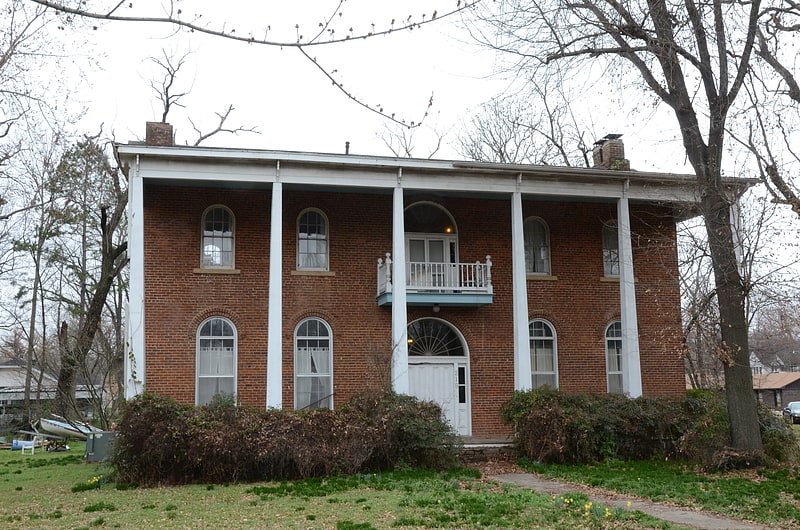
The Capt. Archibald S. McKennon House is a historic house at 215 North Central Street in Clarksville, Arkansas. It is a two-story masonry structure, built of brick laid in common bond and covered by a flat roof. A two-story portico extends across its front, supported by slender tapered square columns. It was built in 1868 for a Confederate Army veteran and prominent local businessman and lawyer.
The house was listed on the National Register of Historic Places in 1976.[8]
Clarksville National Guard Armory
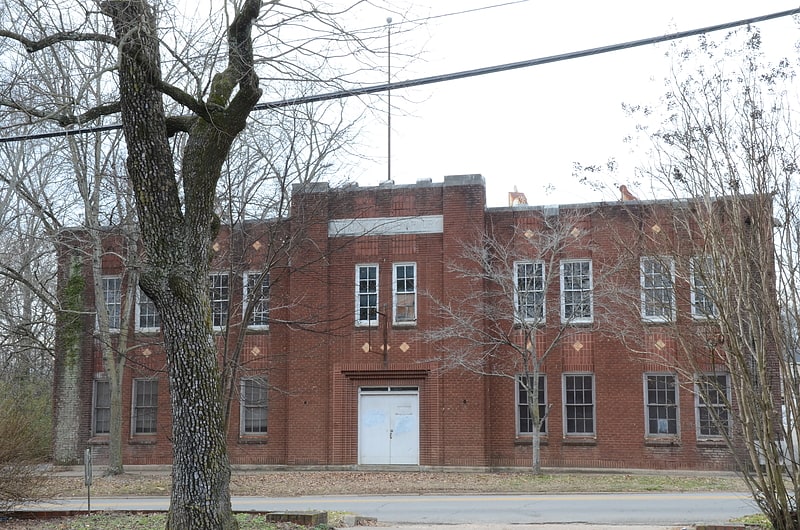
Building in Clarksville, Arkansas. The Clarksville National Guard Armory is a historic former National Guard Armory at 309 College Street in Clarksville, Arkansas. It is a two-story building, finished in brick with restrained Art Deco styling. Its main facade is 10 bays wide, with a projecting section at the center housing two bays on the upper floor, and a double door entrance on the first. The entrance is set in a stepped recess, and it and the windows above are flanked by brick pilasters at the corner of the projection. The building was built in 1930, and served the Arkansas National Guard as a training and storage facility until 1980, after which ownership was turned over to the city.
The building was listed on the National Register of Historic Places in 2007.[9]
Pennington House

The Pennington House is a historic house at 317 Johnson Street in Clarksville, Arkansas. It is a 2+1⁄2-story wood-frame structure, with a complex cross-gabled plan, weatherboard siding, and a stuccoed brick foundation. It has an eclectic blend of Italianate and Folk Victorian features, including paired brackets in its eaves, moulded hoods over its sash windows, and a decorated porch. The house was built in 1888-89 by B.D. Pennington.
The house was listed on the National Register of Historic Places in 1994.[10]
Edward Taylor McConnell House

The Edward Taylor McConnell House is a historic house at 302 South Fulton Street in Clarksville, Arkansas. It is a two-story wood-frame structure, built in 1869 for use as a school and Masonic lodge. It was enlarged in 1876 for conversion to a private residence, and given Folk Victorian style, notably in the delicate spindlework of its front porch. The latter work was done for Edward Taylor McConnell, a prominent local businessman and figure in the Brooks-Baxter War.
The house was listed on the National Register of Historic Places in 2001.[11]